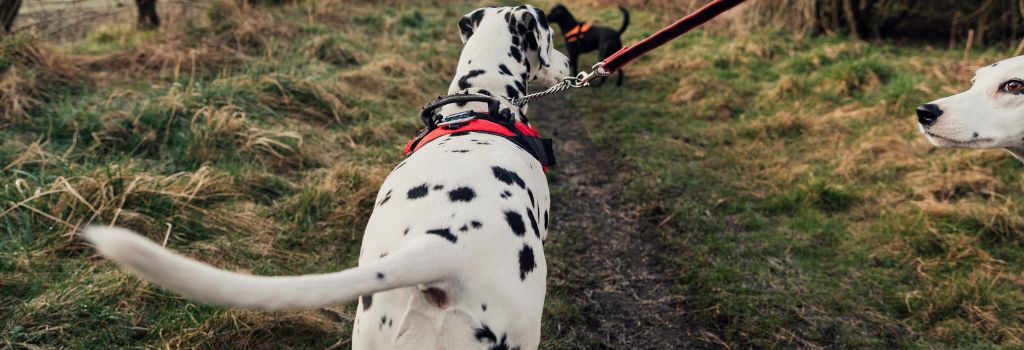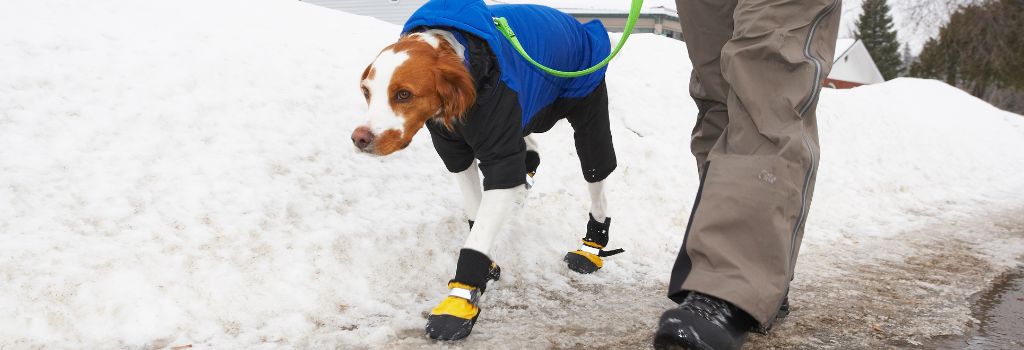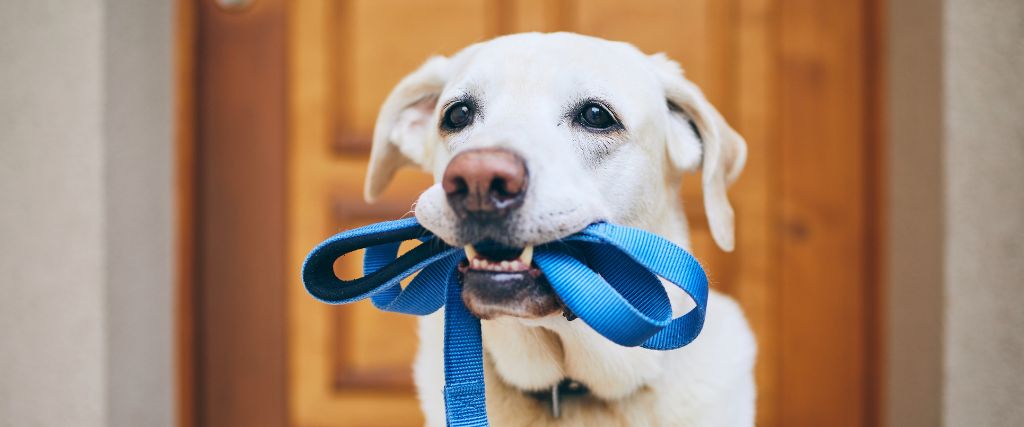Walking your dog is more than just a daily chore — it’s an opportunity for bonding, exercise, and adventure. But having the right gear is essential to make the most of your walks. From leashes to water bottles, the proper equipment makes a simple stroll a safe, enjoyable experience for you and your furry friend.
As veterinarians, we’ve seen firsthand how the right (or wrong) walking gear impacts a dog’s health and happiness. That’s why we’ve put together this comprehensive guide to help you choose the best equipment for your canine companion. Let’s explore the must-have items for successful dog walks, along with tips on selecting and using them effectively.
Collars and Harnesses
The debate between collars and harnesses is ongoing in the pet community, and for good reason — both have their merits. Collars are traditional and great for holding ID tags, but they can put pressure on a dog’s throat, especially if they tend to pull.
On the other hand, harnesses distribute pressure more evenly across the chest and back, making them ideal for dogs with respiratory issues or those prone to pulling.
When choosing a collar, look for one that’s snug but not tight. You should be able to fit two fingers between the collar and your dog’s neck comfortably. Opt for durable materials like nylon or leather, and make sure the hardware is sturdy and rust-resistant.
For harnesses, proper fit is crucial. A well-fitted harness should allow complete range of motion without chafing or restricting breathing.

There are various harness styles available, including:
- Back-clip harnesses: Good for calm walkers
- Front-clip harnesses: Helpful for reducing pulling
- Dual-clip harnesses: Versatile for different walking styles
Keep in mind that works for one dog may not work for another. Don’t hesitate to try different options to find what suits your pup best.
Leashes
A leash is your lifeline to your dog during walks, so choosing the right one is crucial. The ideal leash should be strong, comfortable to hold, and appropriate for your dog’s size and temperament.
The most popular leash types include:
- Standard flat leashes: Versatile and suitable for most dogs
- Retractable leashes: Offer more freedom but require careful handling
- Rope leashes: Durable and often more comfortable to grip
- Chain leashes: Chew-resistant but can be heavy
While retractable leashes are popular, they are dangerous when misused. They can encourage pulling and cause injuries if the cord wraps around limbs. If you choose a retractable leash, be vigilant and use it responsibly.
The length of the leash matters, too. A 6-foot leash is standard and suitable for most situations, allowing enough freedom while maintaining control. For training purposes or in crowded areas, a shorter 4-foot leash might be preferable.
Waste Management Solutions
Let’s face it: Picking up after your dog isn’t the most glamorous part of walks, but it’s your responsibility. Always carry waste bags with you. Many eco-friendly options are available, including biodegradable bags made from plant-based materials.
Consider investing in a waste bag dispenser that attaches to your leash or belt loop for convenience. Some even come with built-in hand sanitizer dispensers — a handy feature for maintaining hygiene on the go.
Water Bottles and Portable Bowls
Keeping your dog hydrated during walks is essential, especially on warm days and longer outings. Collapsible water bowls are ideal because they are lightweight and easy to carry. Pair these with a refillable water bottle, and you’re set for hydration on the move.
Some innovative products combine a water bottle with a built-in bowl, making it even easier to offer your pup a drink. Whatever option you choose, make sure it’s easy to clean to prevent bacterial growth.
Booties and Balms
Your dog’s paw pads are tough, but they’re not invincible. Hot pavement, rough terrain, or icy conditions can cause discomfort or even injury. Dog booties provide excellent protection against these elements. If your dog isn’t keen on wearing shoes (and many aren’t at first), paw balms protect against minor irritants and help soothe dry or cracked pads.

When introducing booties, be patient and use positive reinforcement. Start with short periods indoors to help your dog get used to the sensation. As for balms, look for products with natural ingredients like beeswax or shea butter.
Visibility Gear
Whether you’re an early bird or a night owl, chances are you’ll sometimes walk your dog in low-light conditions. Reflective gear is crucial for safety during these times. Many collars, harnesses, and leashes come with reflective strips, but you can also add separate reflective tags or bands.
LED collars or clip-on lights are another excellent option for increasing visibility. They help drivers see you and make it easier for you to keep an eye on your dog in dimly lit areas.
Treat Pouches
Positive reinforcement is a powerful tool in dog training, and walks are perfect opportunities for reinforcing good behavior. A treat pouch allows you to carry rewards easily and access them quickly. Look for a pouch with a secure closure to prevent treats from spilling out.
Some treat pouches come with additional pockets for storing waste bags, keys, or your phone, making them a versatile accessory for your walks.
First Aid Kit
While we hope you’ll never need it, a compact first aid kit is a wise addition to your dog walking gear.
Include items like the following in your dog’s first aid kit:
- Gauze pads and self-adhering bandage wrap
- Tweezers for removing splinters or ticks
- Styptic powder to stop minor bleeding
- Saline solution for cleaning wounds
- An emergency blanket
- Contact information for your veterinarian and the closest emergency animal hospital
Familiarize yourself with basic canine first aid, and know when to seek professional veterinary care.
Cooling and Warming Accessories
Depending on your climate, you might need gear to help regulate your dog’s body temperature. In hot weather, cooling vests or bandanas help prevent overheating through evaporative cooling. They can be a lifesaver on scorching days!
For colder climates, consider a well-fitted dog coat or sweater. Look for one that covers the chest and belly, as these areas are more susceptible to heat loss.
Enjoying Walks with Your Four-Legged Best Friend
As veterinarians, we can’t stress enough the importance of proper gear in ensuring safe and enjoyable walks for your dog. The right equipment enhances the walking experience and contributes to your pet’s overall health and well-being.
While this guide covers the essentials, your dog might require additional or specialized gear. If you have concerns about your dog’s walking habits, physical limitations, or any health issues that might affect their exercise routine, we encourage you to schedule an appointment with your veterinarian. We’re here to help you and your canine companion get the most out of your walks and ensure they remain a highlight of your dog’s day for years to come.
If you have questions and you'd like to reach out to us, you can call us directly at (925) 732-7499, or you can email us at [email protected]. Don't forget to follow us on social media Facebook, Instagram.

